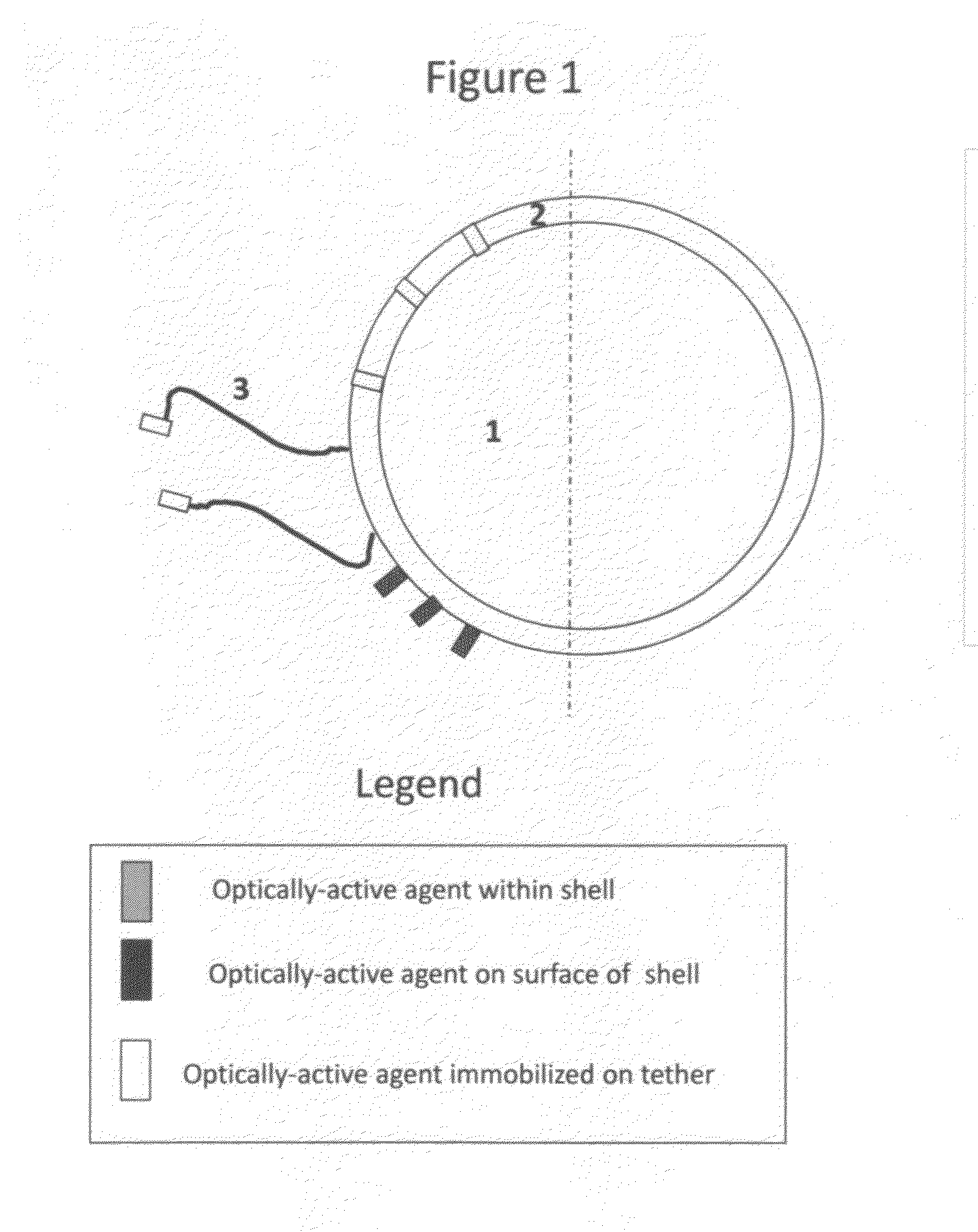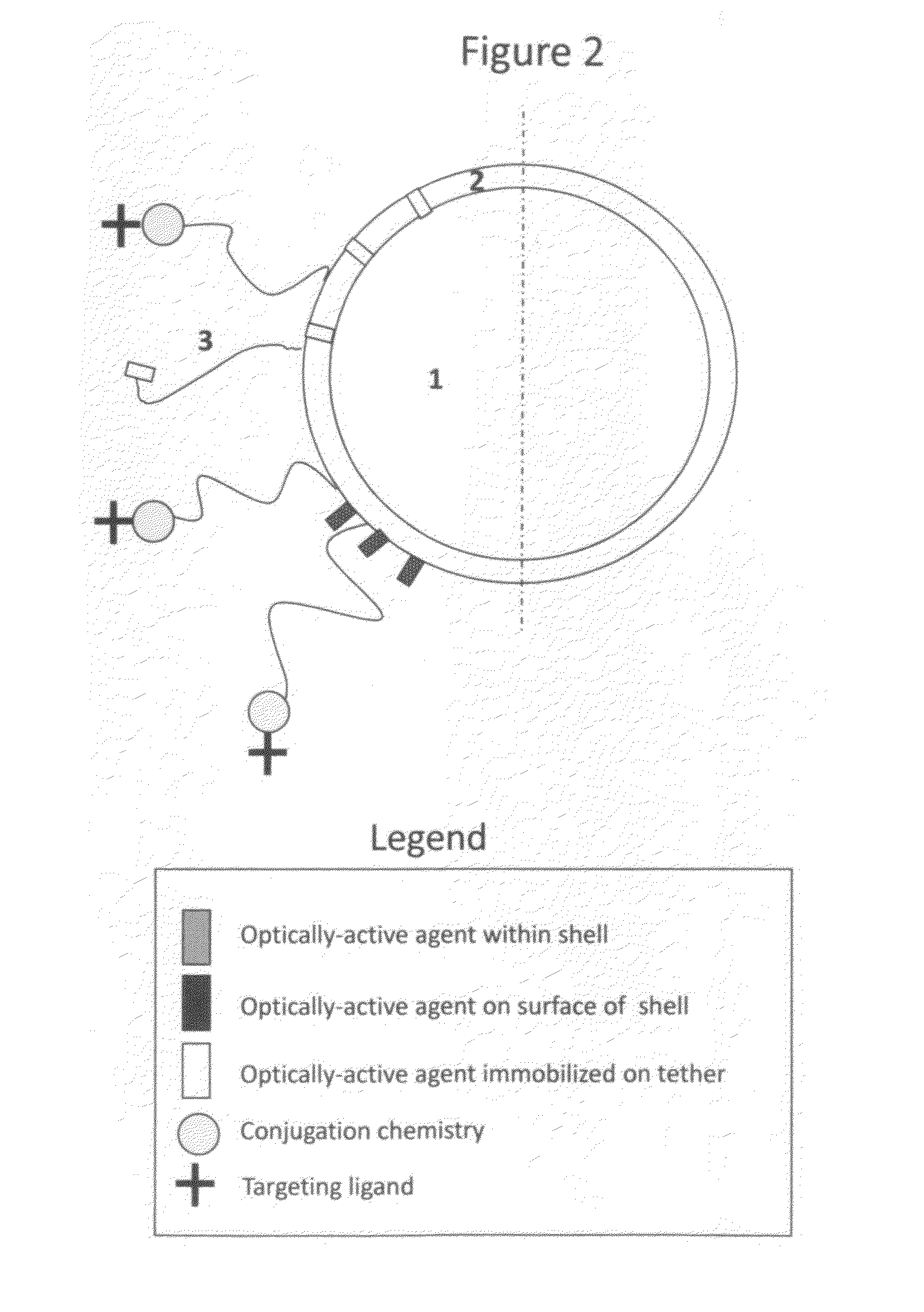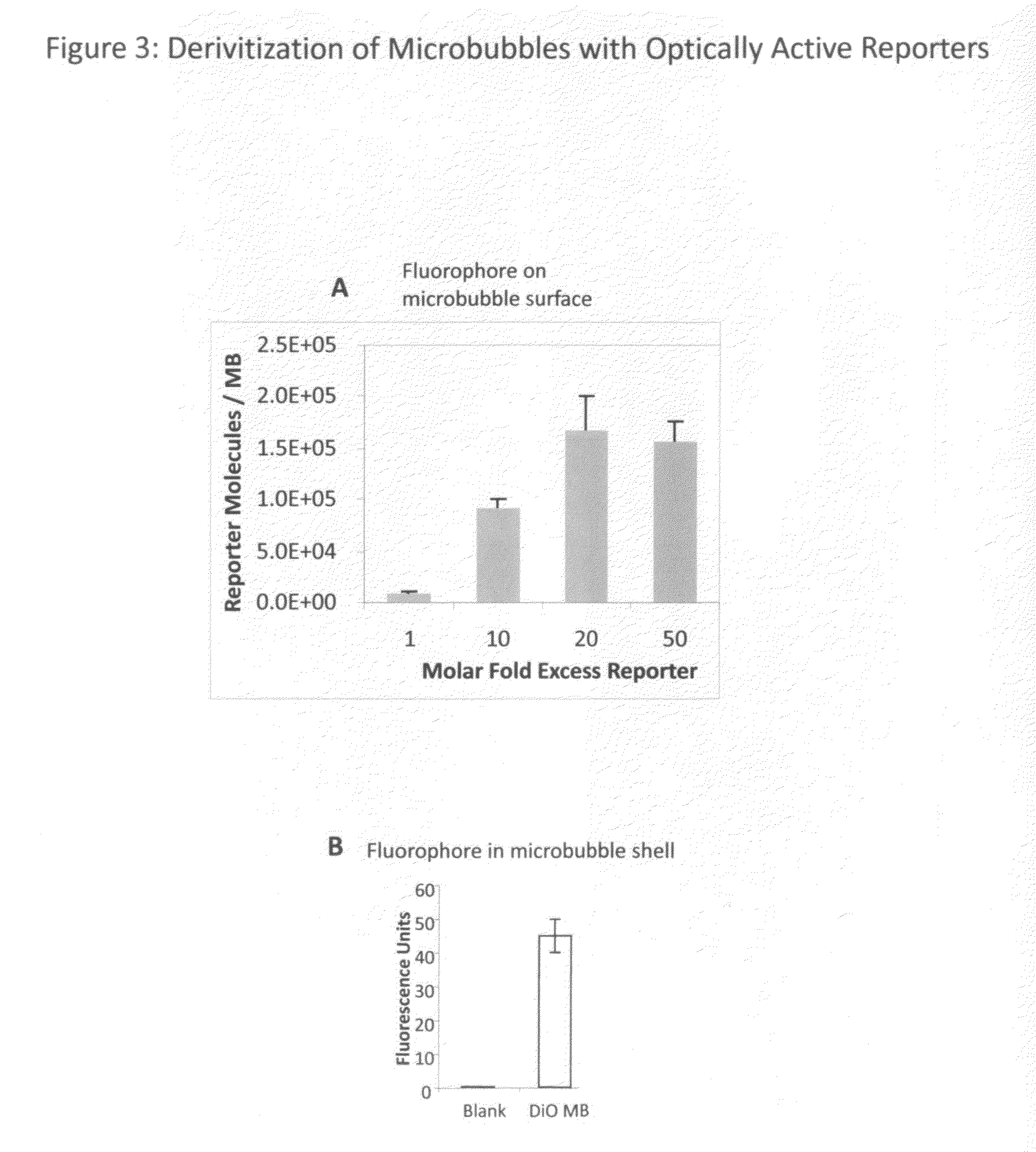Optical imaging contrast agents and uses thereof
a contrast agent and optical imaging technology, applied in the field of optical imaging contrast agents, can solve the problems of describing contrast agents, long dwell time, and time required for clearance of unbound contrast, and can introduce significant inconvenience in imaging workflow
- Summary
- Abstract
- Description
- Claims
- Application Information
AI Technical Summary
Benefits of technology
Problems solved by technology
Method used
Image
Examples
specific examples
[0048]The following examples illustrate, but in way are intended to limit the invention.
example 1
Synthesis of Microbubbles by Sonication
[0049]Microbubbles consisting of a lipid monolayer encapsulating decafluorobutane gas (SynQuest) are prepared by mixing 40 mg of distearoyl phosphatidylcholine (Avanti Polar Lipids) and 20 mg polyoxyethylene-40 stearate (Sigma-Aldrich). This mixture is added to 20 mL of sterile normal saline and sonicated to clarity using a probe-type sonicator. Decafluorobutane gas is dispersed through the aqueous phase via a thin capillary tube, and sonication continued until the formation of microbubbles, sizes of 1-30 um (mean size 1-5 um). The resulting microbubbles are stabilized with a lipid monolayer and augmented with polyoxyethylene as an emulsifier. Microbubbles so prepared are stored refrigerated under a perfluorocarbon atmosphere until further use.
[0050]Microbubbles are also prepared with different shell compositions, including denatured proteins, sugars, and non-biological polymers. For example, decafluorobutane microbubbles stabilized by a shell ...
example 2
Synthesis of Microbubbles with Reactive Groups
[0051]Microbubbles bearing the reactive group 2-pyridyl disulfide (PDP), to which targeting ligands or optically active probes may be immobilized, are prepared as follows. Microbubbles consisting of a lipid monolayer encapsulating decafluorobutane are prepared by mixing 40 mg of phosphatidylcholine, 20 mg polyoxyethylene 40 stearate, and 5 mg of PDP-PEG(2000)-disteroylphosphatidylethanolamine (Avanti). This mixture is added to 20 mL of sterile normal saline (Baxter) and sonicated to clarity using a probe-type sonicator. Decafluorobutane gas is dispersed through the aqueous phase via a thin capillary tubing and sonication continued with the formation of microbubbles, sizes of 1-30 um (mean size 1-5 um). The resulting microbubbles are stabilized with a lipid monolayer and augmented with a polyoxyethylene brush for improved stability and PDP residues on a long polymer tether for the subsequent ligand conjugation. Microbubble material is sto...
PUM
 Login to View More
Login to View More Abstract
Description
Claims
Application Information
 Login to View More
Login to View More - R&D
- Intellectual Property
- Life Sciences
- Materials
- Tech Scout
- Unparalleled Data Quality
- Higher Quality Content
- 60% Fewer Hallucinations
Browse by: Latest US Patents, China's latest patents, Technical Efficacy Thesaurus, Application Domain, Technology Topic, Popular Technical Reports.
© 2025 PatSnap. All rights reserved.Legal|Privacy policy|Modern Slavery Act Transparency Statement|Sitemap|About US| Contact US: help@patsnap.com



